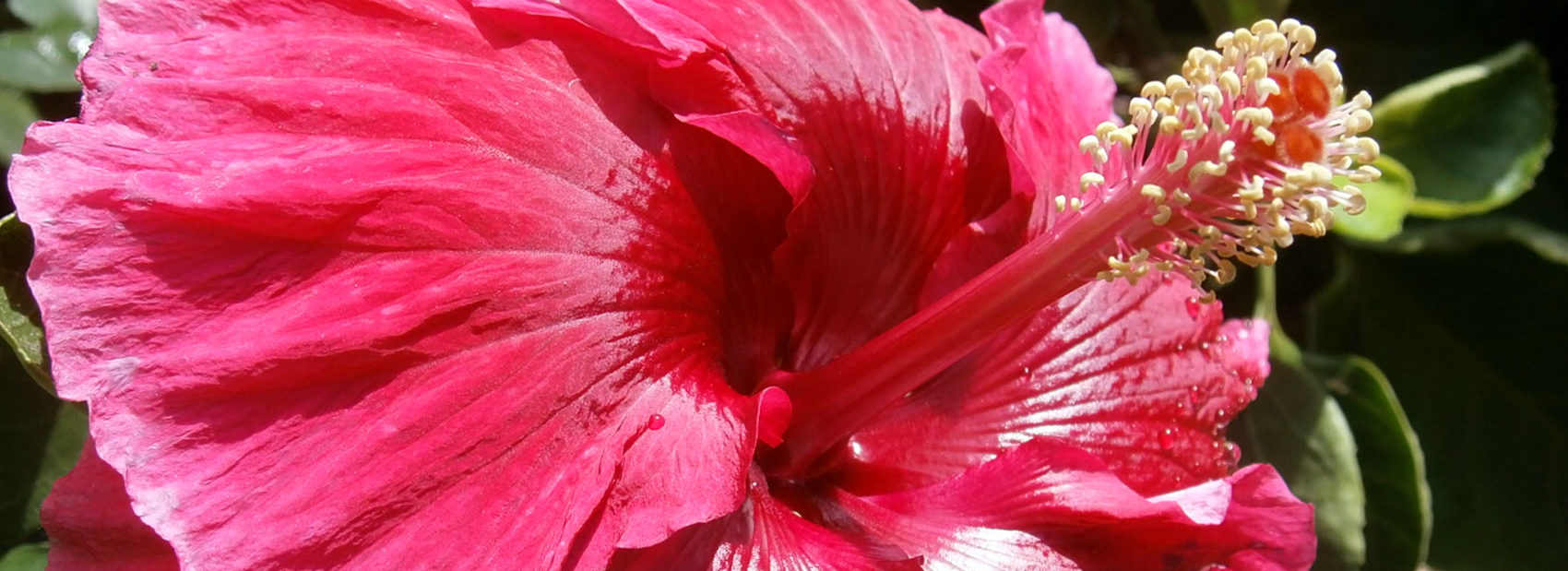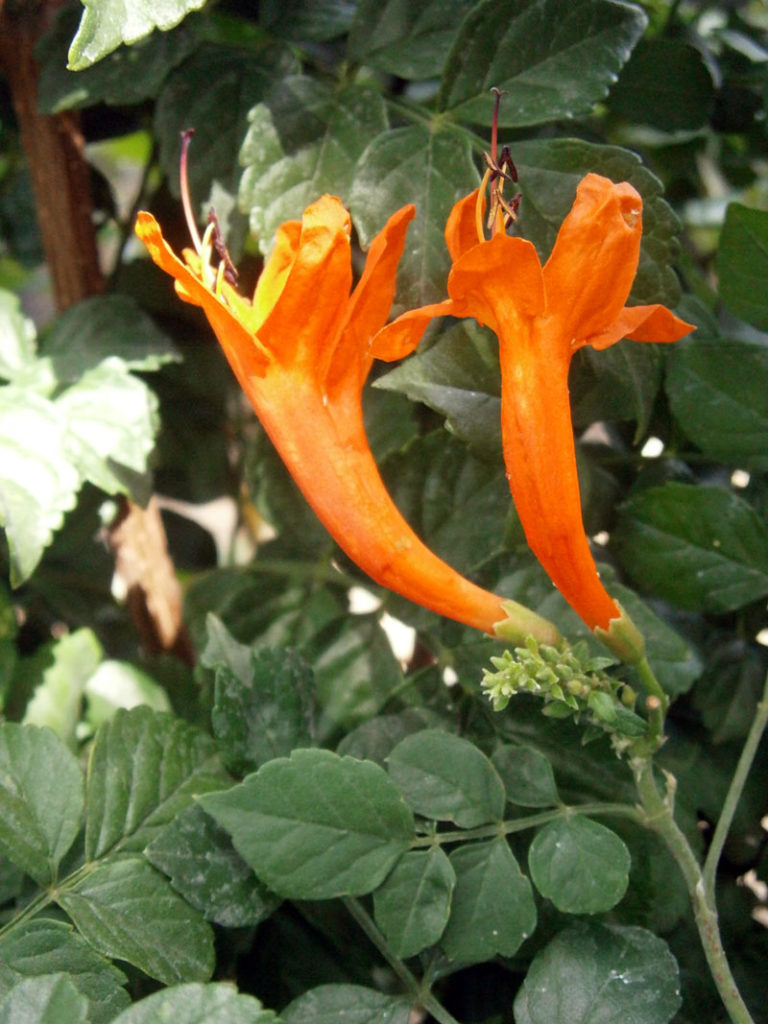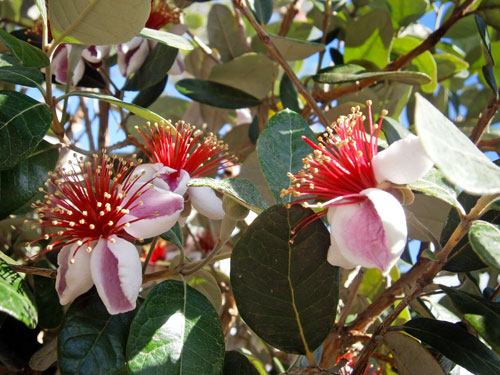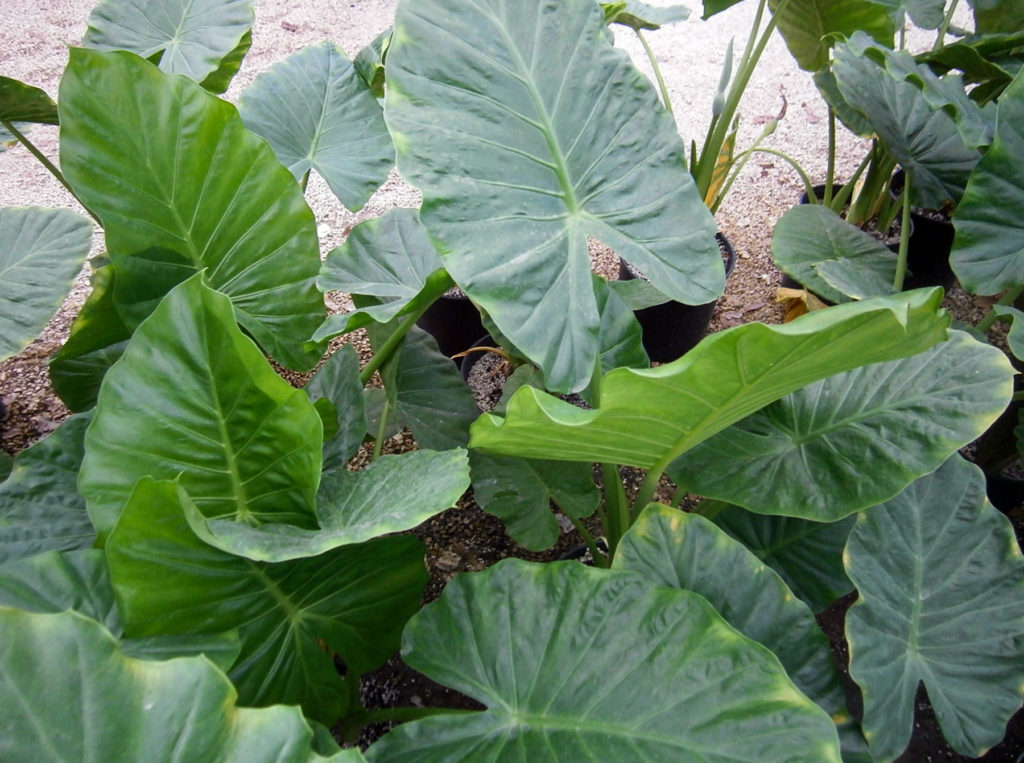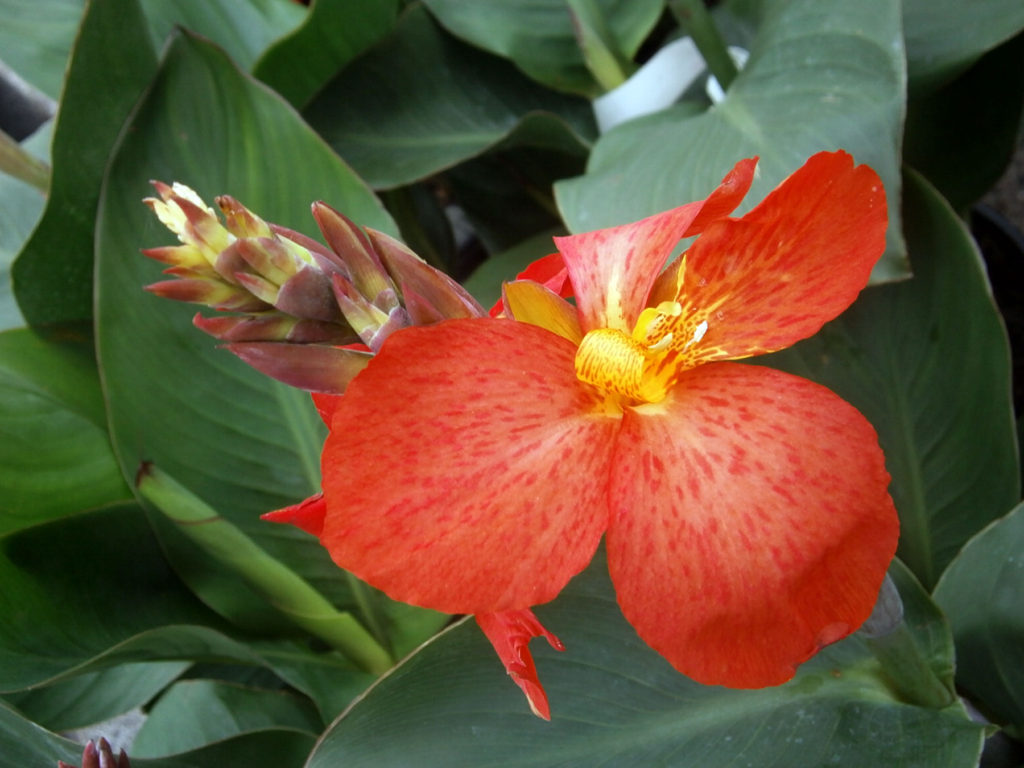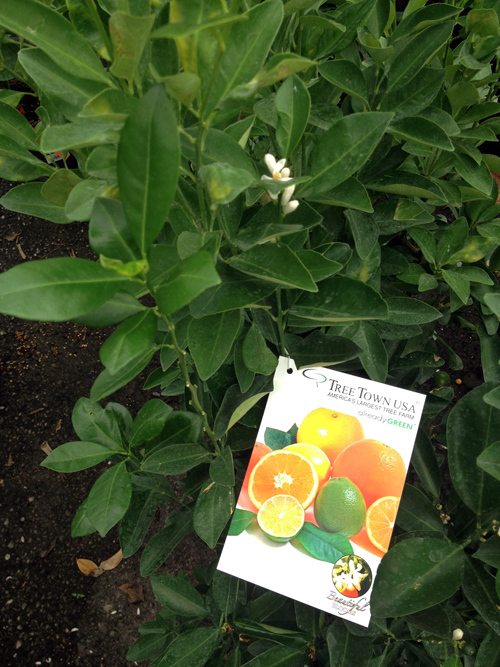September Plant of the Month
Cape Honeysuckle
Cape Honeysuckle might have a misleading name, but this plant won't do you wrong! Not a true honeysuckle, it's actually related to trumpet vine, desert willow and jacaranda. It gets its name from the Cape of Good Hope in South Africa where it is a native plant. Yup, South Africa, where it gets nice and hot and dry. It does just as well here as it does there!
The average size of this beauty is about 6-8 tall and wide, though it depends on how you prune it. It can be grown as a shrub or trained as a vine. As a shrub, it will have a loose, open vase shaped growth habit. As a vine, it can grow 15' or more. It's also a fast grower and if left to its own devices, will shoot up runners far from the main plant-just clip 'em if they get outta hand.
Cape honeysuckle can be recognized by its glossy dark green, diamond shaped leaves. This plant will get covered in vibrant red-orange honeysuckle-like blooms year round. This no doubt attracts lots of butterflies, bees and hummingbirds.
Cape honeysuckle is considered a tropical evergreen, but around here it tends to be a semi-evergreen or perennial. Most years it will not freeze back, but if it does, it comes back every spring.
Grow Cape Honeysuckle in containers or in the ground. It grows best in full sun but can also tolerate partial shade. Pair it with perennials like Esperanza and Plumbago for explosive color!

